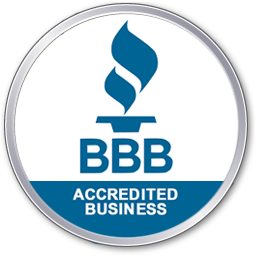Executive Summary
- A Phase 1 Environmental Site Assessment (ESA) identifies potential environmental liabilities, making it beneficial before selling or financing a property.
- Red flags may be raised during a Phase 1 ESA due to historical contamination, underground storage tanks (USTs), nearby hazardous sites, regulatory issues, or concerns about indoor air quality (IAQ).
- Obtaining a Phase 1 ESA can help property owners catch ecological issues early on and prompt further investigation, making it easier to avoid health risks, legal complications, and financial losses.
- Hiring an experienced, licensed environmental professional to conduct Phase 1 ESAs is the best way to ensure the proper detection and prompt remediation of any identified environmental risks.
Learning What Information Can Come from Phase 1 ESAs
Phase 1 Environmental Site Assessments (ESAs) are non-invasive inspections that focus on the ecological health of a property. These professional-led assessments are typically conducted to ensure regulatory compliance and facilitate property transactions, as they help build confidence during sales or financing by identifying potential red flags that require further investigation.
As a property owner, understanding what to expect from a Phase 1 ESA is crucial. During one of these inspections, a certified environmental professional will likely conduct a thorough property walkthrough, review historical records, conduct interviews with relevant parties, and scour government databases to identify potential signs of contamination.
This guide will help prepare you for a Phase 1 ESA by explaining the rudiments of an assessment like this, along with potential red flags you may encounter.
Why Do I Need a Phase 1 ESA?
The purpose of a Phase 1 ESA is to evaluate a property’s historical and current use in order to identify potential environmental contamination or liabilities. Phase 1 ESAs are a vital part of the due diligence process during real estate transactions, providing potential buyers or creditors with confidence before finalizing a sale, refinancing, or entering into a land lease.
What Does a Phase 1 ESA Show?
Phase 1 ESAs can detect various concerns, including:
- The presence of underground storage tanks
- Former gas stations, automotive repair shops, dry cleaners, or wrecking yards
- Leaking or improperly stored drums and containers
- Stained or contaminated soil
- The presence of in-ground hydraulic lifts
- Histories of illegal dumping
- Old electrical transformers that may contain toxic polychlorinated biphenyls
- Unregistered drywells
Each property is different, and Phase 1 ESAs can provide unmatched visibility into the state of each property’s unique environment. Still, it is essential to know what red flags are commonly raised during Phase 1 ESAs in your area, so you can know what to expect.
Six Frequently Seen Red Flags During Phase 1 ESAs
Below are the most common environmental concerns identified during a Phase 1 ESA, based on Alpha Environmental’s several decades of experience serving the greater Portland, Oregon area. If any of the red flags below are raised after your property is assessed, you should schedule further investigation and remediation services as necessary.
1. Historical Contamination
Professionals examine how your land was used in the past by reviewing regulatory documentation and surveying the property. During this process, they may identify environmental risks, such as potential soil or groundwater contamination, that stem from land use decades ago. Some common indicators of soil and groundwater pollution are:
- Past use – Former gas stations, dry cleaners, and auto shops may have left petroleum hydrocarbons, solvents, or heavy metals in the land, making soil testing important if records indicate operations with potentially hazardous materials.
- Adjacent properties – Adjacent or former onsite operations can also cause chemicals to leach onto your property through groundwater pollution, so Phase 1 ESA efforts extend past property boundaries.
To ensure accuracy, dependable Phase 1 ESA companies, such as Alpha Environmental, are as meticulous as possible in their work. For example, our team investigates historical documents and city directories, conducts interviews with past owners, and reviews environmental databases to gauge whether contaminants may exist on or in the vicinity of the property.
2. Presence of Underground Storage Tanks
The United States began implementing stricter environmental regulations on USTs in the 1980s. Nevertheless, by the early 2000s, officials had still failed to inspect 76,000 closed USTs for contamination and 190,000 unregistered USTs that posed a risk of contamination, many of which are still around us.
Thankfully, not all USTs are inherently dangerous; however, those containing heating oil or petroleum can raise a red flag during an assessment because USTs can corrode over time.
Some critical steps environmental professionals take when addressing USTs during a Phase 1 ESA are:
- Age and condition assessment – Tanks that are older than 20 or 30 years commonly have deteriorated coatings or seams, which can increase the likelihood of spills.
- Leak detection methods – After detecting hidden USTs, professionals can utilize advanced tools, including ground-penetrating radar (GPR) and soil sampling, to confirm or deny the presence of leaks.
Phase 1 ESAs are an effective way to detect and prevent underground tanks from continuing to release fuels or chemicals into subsurface systems, because it gives property owners and the environmental professional a chance to decommission or remove USTs, ultimately protecting soils and groundwater from further contamination
Alpha Environmental supports you with your underground storage tank, providing tank sweeps, tank decommisioning, UST removal, and more.Professional Underground Storage Tank Services
3. Proximity to Hazardous Sites
Phase 1 ESAs are not just about what happened at your property—places nearby are also incorporated into the comprehensive assessment. For instance, an environmental professional may raise a red flag if your home or commercial property is near a former or current industrial property that may have caused contamination through runoff or airborne methods.
Many former industrial sites, landfills, and mining sites are designated as Superfund sites under the Comprehensive Environmental Response, Compensation, and Liability Act (CERCLA) by the Environmental Protection Agency (EPA), indicating that they require substantial cleanup efforts. Environmental professionals should be aware of nearby Superfund sites and brownfields, which are known properties where expansion, redevelopment, or reuse may be complicated due to the potential risks of hazardous substances from industrial activities, chemical storage, and other sources.
To gain an all-inclusive view, experienced Phase 1 ESA companies, such as Alpha Environmental, will analyze things like local records, maps, and aerial photographs to pinpoint potential points of cross-site contamination.
4. Compliance and Regulatory Issues
Sometimes, red flags may be raised after reviewing historical violation records or detecting missing permits. Non-compliance from the past may still affect the present-day environmental condition of the property.
Some examples of environmental permitting concerns are:
- Missing stormwater permits
- Failure to register USTs
- Lacking hazardous waste manifests
Additionally, the environmental professional should be able to find previous non-compliance records and enforcement actions taken by regulators on state or federal ecological databases.
Alpha Environmental is dedicated to regulatory compliance. As we perform Phase 1 ESAs in accordance with ASTM standards, we review regulatory databases to verify permit status and check for open violations. In turn, clients can address and remediate issues as necessary before making a purchase or undertaking redevelopment.
5. Indoor Environmental Concerns
A Phase 1 ESA also needs to consider the interior of the property for environmental liabilities. The professional should conduct walk-through visual inspections to identify potential issues and determine whether further testing or follow-up remediation services are required.
Signs of mold, from stains and odors to humidity issues, may indicate microbial growth, potentially prompting a thorough mold inspection to verify its presence.
Aside from just mold, chronic odors or HVAC issues typically indicate poor indoor air quality (IAQ) due to the presence of volatile organic compounds or moisture problems. Nevertheless, IAQ screenings can provide detailed insight into the air quality of the property.
6. Visible Signs of Environmental Issues
During a thorough Phase 1 ESA, landscape and structural clues are not overlooked. For example, the professional should raise red flags over soil staining because discolored or oily soil patches may indicate spills or leaks. Additionally, stressed vegetation, such as dead or stunted plants in an otherwise healthy landscape, can signal underlying contamination.
As the professional moves around your property, they should map, photograph, and collect samples of the red flags mentioned above to facilitate future analysis and assessment.
Importance of Thorough Due Diligence
Failing to identify the six above-mentioned red flags before purchasing a property can result in unforeseen liabilities. In many cases, legal liability is dictated by current property ownership at the time the contamination is discovered.
Depending on the property size and the severity of the environmental issues at hand, liable parties may be required to pay cleanup costs that can exceed hundreds of thousands of dollars. Due to hesitation in taking on potential environmental risks, lenders may refuse to finance deals without knowing what a Phase 1 ESA reveals about the property. Proving you have a hazard-free property is ideal for ensuring smoother borrowing and insurance underwriting.
You can utilize Phase 1 ESAs as a strategic tool to mitigate future disruptions. Plus, identifying red flags early on allows property owners to negotiate purchase price adjustments. Sometimes, contingent remediation strategies can be incorporated into sales contracts.
Alpha Environmental Services Can Address Red Flags from Phase 1 ESAs
A Phase 1 ESA can detail a property’s history, current practices, regulatory standing, and environmental features that are essential to identifying potential environmental risks. As mentioned throughout this guide, common red flags, including historical contamination issues, USTs, proximity to hazardous sites, regulatory non-compliance, indoor issues, and visual clues, should all be assessed before property transactions or simply to offer peace of mind.
Alpha Environmental Services, a well-renowned environmental company in the greater Portland, Oregon area, stands ready to perform all Phase 1 ESA steps and promptly transition into a Phase 2 ESA if needed. We can also assist with follow-up remediation work required to bring the property to a safe and compliant environmental condition. In turn, we are able to help clients avoid surprises and maintain the momentum of real estate transactions.Contact Alpha Environmental Services today to schedule your environmental site assessment and facilitate informed decision making.




